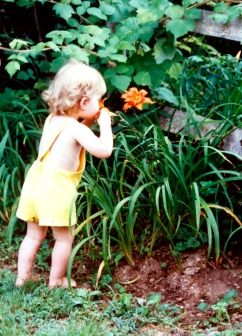Herewith, an intriguing paragraph about physics, biology (the brain), and consciousness:
Wave-particle duality, a fundamental concept of quantum mechanics, proposes that elementary particles, such as photons and electrons, possess the properties of both particles and waves. These physicists claim that they can possibly extend this theory to the soul-body dichotomy. If there is a quantum code for all things, living and dead, then there is an existence after death (speaking in purely physical terms). Dr. Hans-Peter Dürr, former head of the Max Planck Institute for Physics in Munich, posits that, just as a particle “writes” all of its information on its wave function, the brain is the tangible “floppy disk” on which we save our data, and this data is then “uploaded” into the spiritual quantum field. Continuing with this analogy, when we die the body, or the physical disk, is gone, but our consciousness, or the data on the computer, lives on.
This comes from a brief article by Janey Tracey on Outerblogs. I spent a few minutes trying to find more on the physicists she quotes, among them Christian Hellwig, also of Max Planck Institute, and Robert Jahn of Princeton. But I have been too busy to follow up by reading papers and books–between semester mid-term and concerns about our Resident Nonagenarian, who is at present “declining” toward death, things have been…challenging. We are experiencing with our best-beloved the waiting period as the corporeal body shuts down organ by organ, bit by bit, consciousness becoming semi-conscious, then intermittent, and unresponsive, as the mind enters that realm none of us can understand.
Life closes in many ways–swiftly, at times, but more commonly in increments. This death is not the one our best-beloved would have chosen (in one of her recent moments of clarity: “This isn’t what I wanted,” she said). Alas. The slow, to all appearances agonizing, shutting-down toward death probably rates low on most people’s desires list.
The Rolling Stones warned us you can’t always get what you want [skip the ad, listen to the rock n roll]. I suppose that song has already been uploaded onto my spiritual quantum field. Not to mention the spiritual quantum fields of millions of humans. If Dr. Dürr’s speculations are correct, that may mean Mick Jagger, Keith Richards, et al are among the immortals already. And while I am mentioning this possibility with a sense of humor, I do ponder the interesting concept of a quantum code that encompasses human memory-processing, experience, and mind. It seems to be distinctly likely that consciousness is a tangled hierarchy.
Tangled hierarchy as in strange loop, or paradox, explained in Goedel’s Incompleteness Theorems. Douglas Hofstadter, trying to get his mind around the problem of consciousness, suggests that such a “flipping around of causality” appears to happen in minds possessing self-consciousness. The mind perceives itself as the cause of feelings, thoughts, etc. Our 20th-century scientific models posited that feelings and desires are caused solely by the interactions of neurons.
Though maybe quantum theory and biophysics and 21st-century neurological psychology studies will indicate we are still pretty far from the Whole Story.
Meanwhile, one story of one person draws nearer the close. No–that is not the case. The body will die. Her story–her many stories, told from many perspectives, her paradoxes, her own strange loopiness–91 years has only been the beginning.

Rene Magritte “The Treachery of Images” 1928. Los Angeles County Museum of Art

 Bhalla–one of several translators of Husain’s work into English–comments during this interview: “The poet-storyteller is both blessed and cursed; he is exiled from Heaven and the courts, but he understands how integrally he is ‘of this Earth’–that is, secular. This seems to be the tradition in which you have been trying to locate yourself. Isn’t that why both the religious fanatics and the ideologically motivated find it difficult to accept you?”
Bhalla–one of several translators of Husain’s work into English–comments during this interview: “The poet-storyteller is both blessed and cursed; he is exiled from Heaven and the courts, but he understands how integrally he is ‘of this Earth’–that is, secular. This seems to be the tradition in which you have been trying to locate yourself. Isn’t that why both the religious fanatics and the ideologically motivated find it difficult to accept you?”


